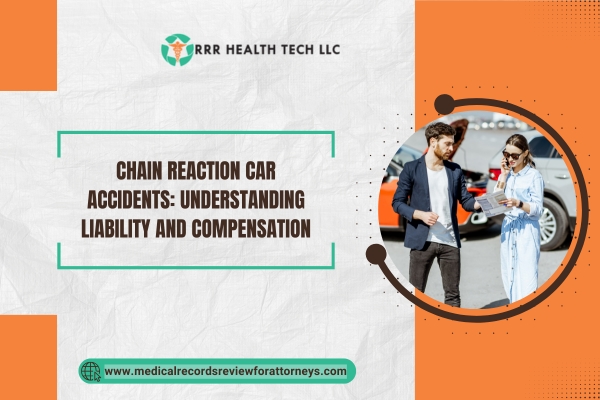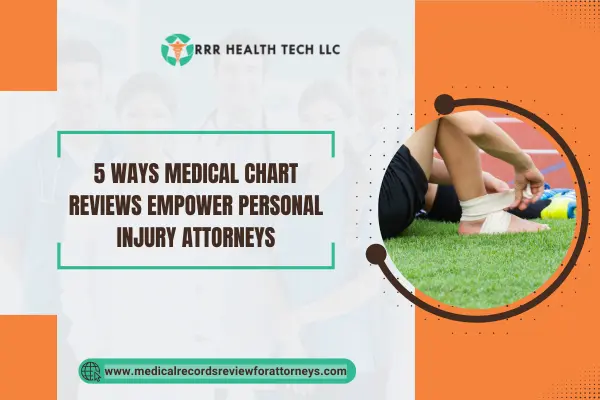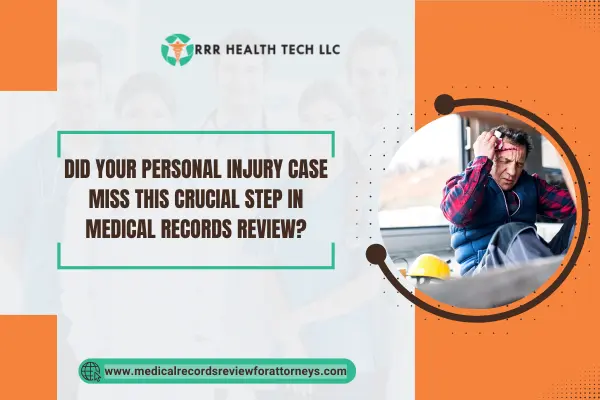
Introduction
Due to their multilevel nature, chain reaction car accidents can inflict severe damages and even death, and are often very challenging legal cases. For victims, liability determination is a very sensitive area that must be dealt with very cautiously. This essay seeks to explain chain reaction car accidents as a whole, its liabilities and compensations, and the review of medical records by attorneys in the United States.
What is a Chain Reaction Car Accident?
Definition and Importance
• Chain Reaction Car Accident: A car crash that begins as the collision of two vehicles and leads to multiple vehicle crashes.
• Importance: Such incidents may lead to significant bodily injury or death which necessitates the study of the legal ramifications.
Statistics
• In the USA, according to a report released by NHTSA, it is estimated that more than 40% of motor vehicle accidents involves chain reaction car accidents and are responsible for 13k + deaths each year.
Factors Contributing to Chain Reaction Accidents
Common Causes
• Driver Negligence: Reckless driving distracted driving, and driving under the influence of alcohol.
• Environmental Conditions: Bad roads, weather (rain, snow, fog) and road works.
Legal Implications
• These factors are important for assessing the liability and the accurate compensation claim.
Determining Fault in Chain Reaction Accidents
Legal Framework
• At Fault States: In places such as Iowa, the party at fault must pay for damages caused by the accident.
• Comparative Negligence: More than one driver could be at fault, which could limit the amount of compensation that any one person may receive.
Key Considerations
• Evidence Gathering: Collection of evidence from the point of accident is integral.
• Insurance Claims Assessors: Insurance companies also play a part in apportioning blame.
Medical Records Review: A Vital Service for Attorneys
Importance of Medical Records
• It Shows Injury: Claims made by the client are likely to be reinforced with accurate medical records.
• It Changes the Payable Amount: Award quantum is greatly affected by proper medical records.
How Medical Records Review Services Assist Attorneys
• Identifying Supporting Information: Going through medical records provided for the case and highlighting details that substantiate the claim.
• Expert Witnesses: Providing written opinion for issues of medical nature in the case.
Case Studies
Case Study 1: Overview of a Multi-Vehicle Collision
- Overview: A chain reaction of four vehicles colliding together on a highway.
- Challenges: Assigning exactly who is to blame when there are so many drivers involved.
- Solutions: The comprehensive review of medical documents provided sufficient information on the injury and therefore assisted in the case.
- Compensation: In the end, victims were compensated according to the predetermined ratio of blame.
Case Study 2: A Fatal Chain Reaction Accident
• Overview. This accident resulted in two fatalities and multiple injuries.
• Challenges. Complications surrounding liability stemming from multiple negligent drivers made this case more difficult.
• Solutions. The settlement negotiations were significantly affected by the added medical records that demonstrated the level of injuries sustained.
• Compensation. The families obtained settlements for said wrongful death and health expenditures.
Conclusion
Being able to analyze the details involved with chain reaction car accidents is crucial in helping victims retrieve compensation. Medical records pass through review services, which are equipped with vast resources and almost always grant the needed assistance to lawyers trying to build solid cases. Knowing where the liabilities lay, what compensation exists and why documenting everything is essential, helps the victims avoid the legal procedures with difficulty.


